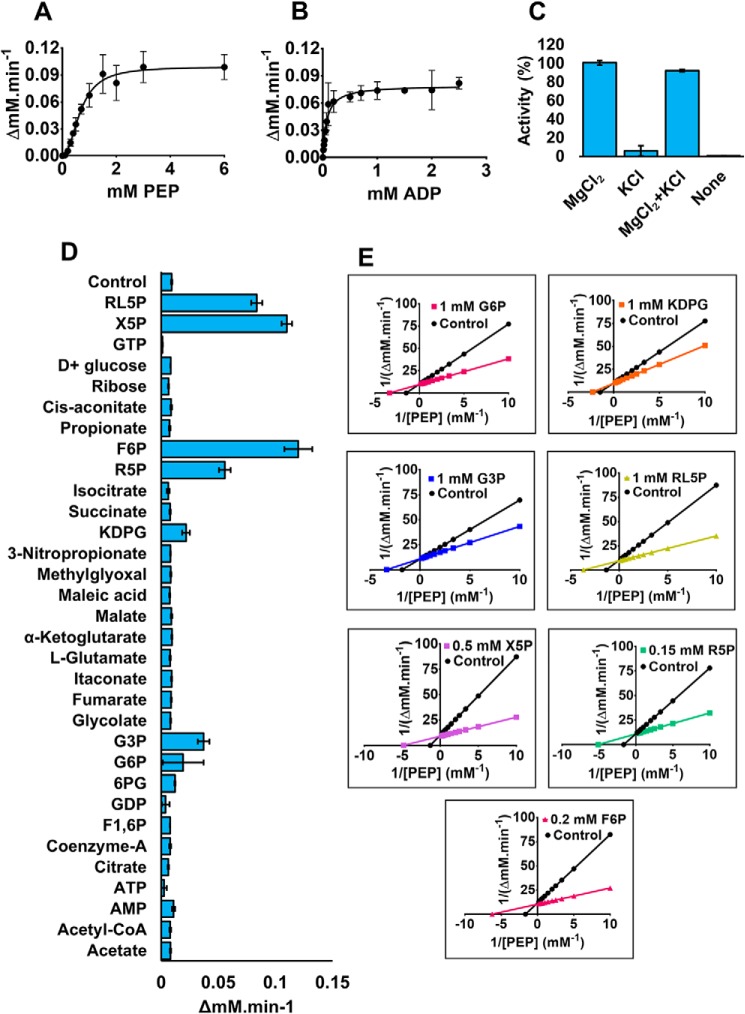Figure 2.
Kinetic characterization of PykA. A and B, PykA kinetics with respect to PEP and ADP. The PEP titration was carried out using a saturating concentration of ADP (2 mm), whereas the ADP titration was carried out using a saturating concentration of PEP (5 mm). C, effects of monovalent and divalent cations on PykA activity. MgCl2 and KCl were added at 10 and 100 mm concentrations, respectively. PEP and ADP were at saturating initial concentrations (5 and 2 mm, respectively). D, the effect of putative metabolic regulators on PykA activity at low [PEP] (0.3 mm). [ADP] was fixed at 2 mm. The rationale here was to identify potential activatory molecules. Potential regulators were added at a final concentration of 1 mm, except for F6P, R5P, and X5P, which were added at 0.2, 0.15, and 0.5 mm concentration, respectively. Data of A–D represent the mean ± S.D. of three independent experiments. E, Lineweaver-Burk plots demonstrating that the indicated metabolic molecules primarily act to decrease s0.5 of PykA compared with control (without regulators).

